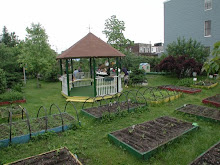THE PROBLEMS WE’RE FACING
Food consumption is an area where individual decisions can make a difference; supply will follow demand and it’s already happening. But first we need to look at the current landscape:
- The way food is produced and the way we eat create huge costs that are not reflected in our food bills. Some are actual dollar amounts (subsidies and cleanup costs that we pay for in texes); some are damage to the environment (pollution and loss of wildlife habitat); some are loss of quality of life (tasteless food, loss of the pleasure of preparing food and eating together); and some are health issues (obesity, diseases, poor nutrition, contaminated food).
- Agribuisness farms employ chemical-intensive systems that pollute land, air, and water.
- We transport much of our food from centralized factory farms-instead of buying it from local sources-which is a poor use or resources and a contribuitor to air and water pollution.
- We're losing our wild places because of wasteful agricultural practices such as uncontrolled grazing and fattening up animals with diets of factory-farm corn.
- Americans get much of their meat from pollution-causing factory farms and feedlots.
- More and more of our food production is controlled by a few large producers. Buying from small, independent producers allows us some input into how our food is grown
A campaign to promote sustainable food choices.
from the Sierra Club National Sustainable Consumption Committee.
We, the consumers, through our food choices, can stop the practices that harm our health, our planet, and our quality of life.from the Sierra Club National Sustainable Consumption Committee.
The True Cost of Food is a 15 minute educational and entertaining video about sustainable food. Emailtruecostoffood@aol.comto get a copy of the video (DVD or VHS) and discussion guide.












No comments:
Post a Comment